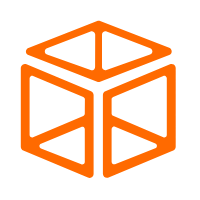The Development of the Internet of Things (IoT) is a natural choice for technological and social progress. With the continuous development of the IoT technology, an IoT ecosystem is gradually taking shape. However, various terminals, massive data, and complex application scenarios slow down the technology’s adoption.
As a ubiquitous business, IoT has many problems such as industrial barriers, technical restrictions, cross-platform support, and fragmented development of the industry. How can we effectively resolve these problems? Building a unified intelligent information management platform undoubtedly gives a fillip to IoT development. As the technologies such as cloud computing, big data, and AI are becoming more and more sophisticated, the IoT platform will inevitably become a battleground for IoT ecosystem deployers.
According to some research, the largest share of the future IoT value chain lies in the software and services. By 2025, revenues of software and service providers will account for 85% of the total revenues. The platform will become the core of the industrial ecosystem, and giants may appear in the application enablement platform (AEP) and connectivity management platform (CMP) industries.
Analysts have pointed out that in the perspective of the IoT industry chain, platform vendors will aggregate most of the traffic. Vendors who provide infrastructures or application platforms for operators will benefit from the industry growth.
An IoT platform can implement device management, network connection management, and data management and analysis for the terminals. It provides IoT application development services and connects to third-party application systems. As artificial intelligence (AI) and machine learning technologies become more and more sophisticated in the future, the IoT platform will provide powerful business analysis functions.
The IoT platform undertakes business and connects to terminals. After we connect a large number of IoT devices to the platform, we can gather real-world information from sensors. Sensors transmit this information to the platform using mobile networks (LPWAN, GSM, 3G, LTE, 5G, and so on), Wi-Fi, ZigBee, Bluetooth, RFID, and other connection technologies.
As time goes by, this creates a massive information repository which we can store on the big data platform. A big data platform can process and convert this data into valuable insights. A platform that supports application development environments can call the corresponding API, and communicate and link with terminals through signals over a communication network.
Also, for the sensor network that asks for high-performance real-time transmission and has a large transmission volume, a platform with edge computing deployment capabilities can issue information to the corresponding terminals in real time. This ensures that the terminals can have the simple response or information preprocessing functions.
In the era of IoT, trillions of terminals need to connect to a unified IoT operation platform, which seems unimaginable. For example, many device vendors have different production standards and driver interfaces, and the purchase standards of enterprises and consumers differ from each other a lot. Each industry has its unique network connection requirements, and it becomes hard to solve network problems over a single platform.

One has to link multiple devices with each other for operations in different IoT application scenarios. It will be a great challenge for IoT platform service providers to integrate hardware devices. Most enterprises choose to ‘cultivate’ equipment vendors by cooperating with various types of terminal vendors. However, in this case, th number of devices is hard to reach the standard for the Internet of Everything, and the users cannot realize the commercial value quickly.
Ericsson has predicted that by 2021, the number of mobile connections worldwide will reach 27.5 billion, including 15.7 billion IoT connections and 8.6 billion mobile phone connections. The number of connections in fields such as smart manufacturing, smart logistics, smart security, smart power, smart transportation, Internet of Vehicles (IoV), smart home, wearable devices, and smart healthcare will increase exponentially. The spurt in the number of terminals directly puts pressure on the networks.
As network connections are complex, it is difficult for service providers to offer stable and diversified communication environments to users. Common network connection modes include the mobile network (LPWAN, GSM, 3G, LTE, 5G, and so on), Wi-Fi, ZigBee, Bluetooth, and RFID. Many non-network operation users do not have network operation experience. Instead, they pay more attention to applications.
Using platform management, the "big connection" platform provides customers with network management and professional O&M services. In this way, customers can access different networks easily, conveniently, and cost-effectively, and focus on the development and deployment of their applications. Communication device vendors can build stable and wide-coverage communication networks. They can use their rich O&M experience in the IT industry to streamline the experience of the terminal users. H3C is such an enterprise. It recently launched Oasis Platform to provide stable network communication management and remote O&M.
H3C has a potential capacity of 5 million wireless access points (APs), which gives H3C a significant advantage. For the IoT users, APs are the core to build a network environment. Managing APs means managing the network environment. One can transmit all user data to the server through APs, and APs are the aggregation points of data. AP management helps in managing the Data of terminals. One can also connect the terminals of different vendors to the network through a single AP, and connect the modular network blocks to the Oasis Platform through numerous APs, achieving centralized configuration management.
A unified management interface brings great convenience to users and provides many device combinations to realize scenario-based services. With unified O&M, one can upgrade the device firmware with few clicks and ensure automatic maintenance.
While the IoT platform offers much improved horizontal management capability, the business model has changed. Oasis Platform's value conversion is the combination of its advantages and the accumulation of the IT industry. It gets upgraded by enterprise-level APs, creates diverse IoT APs, and pioneers in the IoT ecosystem.
Improvement of the IoT platform service capabilities will inevitably enhance user loyalty and bypass the problem of increasingly homogenous platforms. While IoT platform service providers and terminal vendors are fighting for the value of big data, the improvement of the platform service capabilities will lay a solid foundation for this "protracted battle".

First, they can break down several vertical industries to form replicable experience and copy it to other industries. On the one hand, education, healthcare, manufacturing, and other industries are all looking for an opportunity to leverage IoT. Meanwhile, the SaaS market has matured. The IoT platform is creating numerous opportunities for SaaS services and industries. For example, H3C's Oasis Platform controls the IoT APs to provide campuses with an in-depth IoT "cloud-network-terminal" service. It is prudent to rely on its advantages and seize the industrial opportunities.
Big data has high potential value, but it should not appear only in stories. Service providers should offer valuable and diversified products to gain support from customers. The value of the IoT operation platform does not lie in the amount of data it stores, but in the process it uses to analyze data and present results to the customers. Before the big data boom, the IoT platform service providers should attach more importance to vertical industries, analyze data in the vertical industries, and overcome the difficulties faced by the vertical industries.
Service providers must go deep into the industry, intelligently transform and upgrade the industry, and accumulate industrial users. They can obtain the real value of big data only by accumulating reliable and useful data in real projects, rather than accessing ports and generating a large amount of irrelevant data. Otherwise, they cannot truly integrate IoT services and gain insight into consumers.
Additionally, service provides must continuously accumulate experiences in business, integrate business data, and gain the first-mover advantages in mining the big data business value in the future.
On the one hand, the IoT platform effectively configures and integrates information, content, and specific applications to meet customers' needs for IoT business, creating added value for customers. On the other hand, the common platform provides reusable network connections and duplicable platform functions, which reduce both the IoT investment and the difficulties for developing terminals and applications. Centralized network management and device management also reduce the O&M costs.
Currently, the IoT platform does not entirely solve the difficulties businesses have to encounter in the IoT development. However, the era of a more intelligent and sophisticated Internet of Everything will become a reality with the opening of the IoT business, continuous integration of various industries, and sophistication of cloud computing, AI, and other technologies.
Find similar articles and learn more about Alibaba Cloud’s products and solutions at www.alibabacloud.com.
Lessons Learned at the 2017 CIKM AnalytiCup Machine Learning Competition

2,593 posts | 790 followers
FollowAlibaba Clouder - July 23, 2019
Alibaba Cloud Community - December 7, 2022
Alibaba Cloud ECS - March 10, 2021
Alibaba Clouder - August 9, 2018
Alibaba Cloud Native Community - December 23, 2021
Alibaba Developer - July 9, 2021

2,593 posts | 790 followers
Follow EDAS
EDAS
A PaaS platform for a variety of application deployment options and microservices solutions to help you monitor, diagnose, operate and maintain your applications
Learn More MaxCompute
MaxCompute
Conduct large-scale data warehousing with MaxCompute
Learn MoreLearn More
More Posts by Alibaba Clouder